We left Lahic on a rainy morning and caught the first marshrutka out from the village back to Ismayilli on the main Baku-Balakan highway. It filled up quickly with good natured regulars who greeted each other in a familiar manner and settled down for the ride into town. Along the way a large group of school children dressed in neat uniforms joined in and actually looked happy to be going to school! Before long a feisty old woman seated half way down the bus started talking loudly with the driver at the front of the bus. Other people starting joining the discussion and soon we had a raging debate going. We had no clue as to the subject of the discussion or the positions taken by the various people but judging by the laughter it evoked at regular intervals it seemed the entire bus found it quite entertaining. If only we had someone to translate in real time, we may have gained some really important insights into what seemed like an intense public debate.
Once we got to Ismayilli, we found out that the bus to Qebele, our next transit point that would finally lead us to Sheki, left from a completely different bus stop
. Seeing our confusion, a gentleman who seemed to be headed in the same direction asked us to follow him and we ended up walking at least a kilometer in steady rain. We waited impatiently for over an hour before a minibus bearing a Qebele signboard finally arrived and we were on our way. The road passes through an undulating landscape on the foothills of the Caucasus mountains, and the scenery is particularly pretty between İsmayıllı and Sheki.
Sheki was the capital of the khanate of Khan Haci Celebi in the 1700s when it was called Nukha. The khanate was ceded to Russia in 1805 but the town continued to flourish as a silk weaving town. It was an important junction on the caravan route between Baku and Tbilisi where it met the cross-mountain branch route to Dagestan. At its peak there were five working caravanserais here. One of the historic caravanserais has now been restored as is open to guests as the Karavansaray Hotel.
A steep cobbled street from the old town leads to the stone perimeter of a fortress complex
. Inside the fortress are some of Sheki's main attractions of which the most interesting is the Khan's Palace. It was built in 1762 and though not impressive in size, the interior of the palace is decorated in extraordinarily colorful murals. The facade of the building is decorated with silvered stalactite vaulting and geometric patterns which is complemented by beautiful stained-glass windows. Visitors are allowed to tour the palace only in the company of a guide and unfortunately photography is prohibited inside the palace.
Another building in the complex has been set aside for workshops and studios of artists and craftsmen who are keeping traditional Azerbaijani arts and crafts alive. We were happy to visit several of these, observe experts at work. At a studio displaying traditional musical instruments, a young man played a few short pieces on the Tar (lute) for our benefit.
Higher up in the valley, approximately 5 kms north of Sheki is the small town of Kis (pronounced Kish)
. It was the original site of the khanate but Kis was obliterated by catastrophic floods in 1772 and the capital moved to Sheki. It is reputed to be the best place anywhere to learn about Caucasian Albania (not be confused with the contemporary Balkan Albania), the Christian nation that once covered most of northern Azerbaijan. A half hour ride on the marshrutka took us to the entrance of Kis village and we followed signs up even steeper cobbled streets to the round towered 12th century Albanian church.
Even before we entered the church we we were intrigued by the presence of a statue of Thor Heyerdahl (the Norwegian explorer) close to the entrance of the church. We found out that the church has been renovated with the help of the Norwegian government and has now been converted in to a museum. It was only when we started reading about the history of its renovation, that we began to see the connection between the two.
We learned that Heyerdahl had a particular interest in Azerbaijan's early history
. He had made several visits to the country and was convinced that Norwegians (and other Scandinavians) can trace their roots back to Azerbaijan. According to Norwegian legend, the god Odin came from the land of Aser that lay east of the Black Sea and Heyerdahl theorized that Aser was in fact Azerbaijan. He used archeological evidence found in Kis to bolster his theory. Buried in the area in and around the church were skeletons of people much taller than current day Azerbaijanis. Study of the remains indicate that they had blond hair, much like current day Scandinavians. One of the museum staff explained to us that the average height of Azeris went down over time after mixing with other races in the region. Heyerdahl also used the petroglyphs of reed boats at Qobustan (which we had visited earlier) to support his case.
While this is one of his more controversial theories (and has been disputed by other scholars), it was interesting enough to Norwegians and encouraged the Norwegian Humanitarian Enterprise (supported by the Norwegian government) to take interest in studying and restoring the church. Whether historically correct or not, purely on account of his theory, Thor Heyerdahl is a much admired figure in Azerbaijan.
Google Maps Link
Vikings Originally Came From Azerbaijan?
Tuesday, October 16, 2012
 Sheki, Azerbaijan
Sheki, Azerbaijan
Other Entries
-
64Onward from the Kyrgyz border
Sep 1234 days prior Osh, Kyrgyzstanphoto_camera22videocam 0comment 2
Osh, Kyrgyzstanphoto_camera22videocam 0comment 2 -
65Kyrgyzstan's Second Largest City
Sep 1333 days prior Osh, Kyrgyzstanphoto_camera9videocam 0comment 2
Osh, Kyrgyzstanphoto_camera9videocam 0comment 2 -
66How could you not go to a place called Arslanbob ?
Sep 1531 days prior Arslanbob, Kyrgyzstanphoto_camera15videocam 0comment 1
Arslanbob, Kyrgyzstanphoto_camera15videocam 0comment 1 -
67The Long Road to Bishkek
Sep 1828 days prior Bishkek, Kyrgyzstanphoto_camera14videocam 0comment 3
Bishkek, Kyrgyzstanphoto_camera14videocam 0comment 3 -
68Seven Bulls and a Broken Heart
Sep 2026 days prior Karakol, Kyrgyzstanphoto_camera13videocam 0comment 2
Karakol, Kyrgyzstanphoto_camera13videocam 0comment 2 -
69At Song Kul Lake - An Unforgettable Experience
Sep 2224 days prior Kochkor, Kyrgyzstanphoto_camera23videocam 0comment 0
Kochkor, Kyrgyzstanphoto_camera23videocam 0comment 0 -
70Back to Bishkek
Sep 2323 days prior Bishkek, Kyrgyzstanphoto_camera0videocam 0comment 5
Bishkek, Kyrgyzstanphoto_camera0videocam 0comment 5 -
71Almaty
Sep 2620 days prior Almaty, Kazakhstanphoto_camera16videocam 0comment 1
Almaty, Kazakhstanphoto_camera16videocam 0comment 1 -
72Day Trip To Turkistan
Sep 2818 days prior Shymkent, Kazakhstanphoto_camera8videocam 0comment 1
Shymkent, Kazakhstanphoto_camera8videocam 0comment 1 -
73The Border Crossing You Dont Want To Repeat
Sep 2917 days prior Tashkent, Uzbekistanphoto_camera5videocam 0comment 4
Tashkent, Uzbekistanphoto_camera5videocam 0comment 4 -
74Some History Lessons
Oct 0214 days prior Tashkent, Uzbekistanphoto_camera5videocam 0comment 2
Tashkent, Uzbekistanphoto_camera5videocam 0comment 2 -
75From Slave Market to Museum
Oct 0412 days prior Khiva, Uzbekistanphoto_camera14videocam 0comment 1
Khiva, Uzbekistanphoto_camera14videocam 0comment 1 -
76How Much Renovation is Just Right?
Oct 0610 days prior Bukhara, Uzbekistanphoto_camera32videocam 0comment 3
Bukhara, Uzbekistanphoto_camera32videocam 0comment 3 -
77Timur Land
Oct 097 days prior Samarkand, Uzbekistanphoto_camera28videocam 0comment 1
Samarkand, Uzbekistanphoto_camera28videocam 0comment 1 -
78Goodbye To The 'Stans
Oct 106 days prior Tashkent, Uzbekistanphoto_camera6videocam 0comment 2
Tashkent, Uzbekistanphoto_camera6videocam 0comment 2 -
79Still In Asia Or Is This Europe?
Oct 133 days prior Baku, Azerbaijanphoto_camera28videocam 0comment 1
Baku, Azerbaijanphoto_camera28videocam 0comment 1 -
80Foothills Of The Caucasus Mountains
Oct 142 days prior Lahic, Azerbaijanphoto_camera16videocam 0comment 2
Lahic, Azerbaijanphoto_camera16videocam 0comment 2 -
81Vikings Originally Came From Azerbaijan?
Oct 16 Sheki, Azerbaijanphoto_camera13videocam 0comment 1
Sheki, Azerbaijanphoto_camera13videocam 0comment 1 -
82An Azerbaijani Family
Oct 16later that day Sheki, Azerbaijanphoto_camera0videocam 0comment 3
Sheki, Azerbaijanphoto_camera0videocam 0comment 3 -
83A Change of Faith
Oct 193 days later Tbilisi, Georgiaphoto_camera16videocam 0comment 3
Tbilisi, Georgiaphoto_camera16videocam 0comment 3 -
84Dzhugashvili and Svetitskhoveli
Oct 204 days later Gori, Georgiaphoto_camera17videocam 0comment 2
Gori, Georgiaphoto_camera17videocam 0comment 2 -
85A Border Runs Through It
Oct 215 days later Davit Gareja, Georgiaphoto_camera15videocam 0comment 2
Davit Gareja, Georgiaphoto_camera15videocam 0comment 2 -
86In the Greater Caucasus Mountains
Oct 237 days later Qazbegi, Georgiaphoto_camera15videocam 0comment 1
Qazbegi, Georgiaphoto_camera15videocam 0comment 1 -
87The Pink Capital of Armenia
Oct 2610 days later Yerevan, Armeniaphoto_camera22videocam 0comment 2
Yerevan, Armeniaphoto_camera22videocam 0comment 2 -
88Colors Of The North - Dilijan and Lake Sevan
Oct 2711 days later Dilijan, Armeniaphoto_camera14videocam 0comment 2
Dilijan, Armeniaphoto_camera14videocam 0comment 2 -
89The Armenian Apostolic Church
Oct 2812 days later Echmiadzin, Armeniaphoto_camera13videocam 0comment 0
Echmiadzin, Armeniaphoto_camera13videocam 0comment 0 -
90Two Monasteries And A Winery
Oct 2913 days later Areni, Armeniaphoto_camera9videocam 0comment 0
Areni, Armeniaphoto_camera9videocam 0comment 0 -
91Tatev (Give Me Wings)
Oct 3014 days later Goris, Armeniaphoto_camera10videocam 0comment 0
Goris, Armeniaphoto_camera10videocam 0comment 0 -
92The Nagarno Karabakh Republic
Oct 3115 days later Stepanakert, Azerbaijanphoto_camera18videocam 0comment 2
Stepanakert, Azerbaijanphoto_camera18videocam 0comment 2 -
93Homer in Turkish
Nov 0116 days later Tbilisi, Georgiaphoto_camera1videocam 0comment 1
Tbilisi, Georgiaphoto_camera1videocam 0comment 1 -
94From Caspian Sea To Black Sea
Nov 0318 days later Batumi, Georgiaphoto_camera11videocam 0comment 1
Batumi, Georgiaphoto_camera11videocam 0comment 1 -
95A Short Distance, But A World Apart
Nov 0419 days later Trabzon, Turkeyphoto_camera16videocam 0comment 1
Trabzon, Turkeyphoto_camera16videocam 0comment 1 -
96Rock-cut Tombs and a Deep Valley
Nov 0621 days later Amasya, Turkeyphoto_camera11videocam 0comment 3
Amasya, Turkeyphoto_camera11videocam 0comment 3 -
97Cold and Rainy in the Capital
Nov 0823 days later Ankara, Turkeyphoto_camera14videocam 0comment 4
Ankara, Turkeyphoto_camera14videocam 0comment 4 -
98Ottoman Architecture and Computer Architecture
Nov 1025 days later Safranbolu, Turkeyphoto_camera15videocam 0comment 2
Safranbolu, Turkeyphoto_camera15videocam 0comment 2 -
99Fairy Chimneys and Whirling Dervishes
Nov 1227 days later Goreme, Turkeyphoto_camera26videocam 0comment 6
Goreme, Turkeyphoto_camera26videocam 0comment 6
Comments
2025-04-23
Comment code: Ask author if the code is blank

 Sheki, Azerbaijan
Sheki, Azerbaijan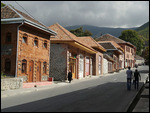
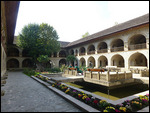
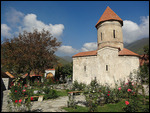
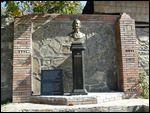







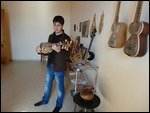
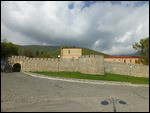



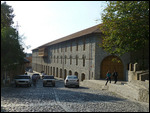

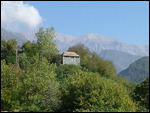

Ramesh
2012-10-28
That's a tall unlikely story. Vikings from Azerbaijan ???
Nice pen portrait of Sheki and the surroundings. I suppose this is very very different from the stans although the vast open spaces may not be dissimilar. Wonder if the old Soviet influences are different from the stans .